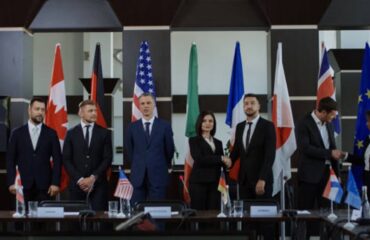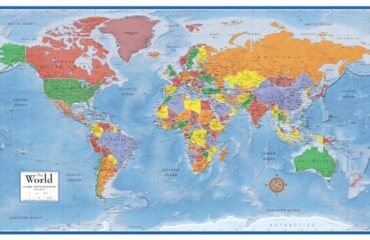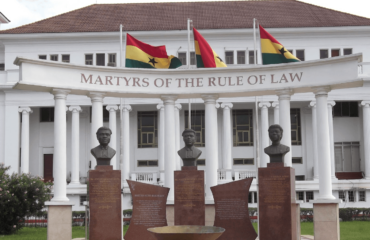
The term “Resource Curse” refers to the paradox where countries rich in natural resources—such as oil, gas, and minerals—often experience slower economic growth, weaker governance, and poorer societal outcomes compared to resource-poor nations. First introduced by economists, this phenomenon reveals that resource wealth can hinder long-term economic and institutional development.
Key observations include:
Historical Evidence: Economies rich in natural resources, such as Spain during its colonial gold and silver exploitation in the 17th century, often performed worse than resource-poor nations like the Netherlands, Japan, or Switzerland.
Contemporary Examples: Resource-rich nations such as Nigeria, Venezuela, and the Democratic Republic of Congo exhibit slower development compared to resource-poor yet economically prosperous nations like South Korea, Singapore, and Taiwan.
Manifestations of the Resource Curse
Dutch Disease
First observed in the Netherlands following the discovery of natural gas in 1959, Dutch Disease refers to the economic imbalance caused by resource windfalls. These lead to:
Currency appreciation, making other export sectors less competitive.
Resource-driven shifts in labor and capital that erode manufacturing and agriculture.
This results in a lopsided economy overly dependent on resource extraction.
Nigerian Disease
In resource-rich nations like Nigeria, resource abundance often fosters poor governance, corruption, and weak institutions.
Key consequences include:
Rent-seeking behavior where political elites prioritize resource rents over public welfare.
Erosion of government accountability due to resource windfalls reducing tax reliance.
Entrenchment of patronage politics, social conflict, and environmental degradation.
Root Causes of the Resource Curse
Economic Factors:
Long-term decline in primary commodity prices compared to manufactured goods.
Limited linkages between resource sectors and other parts of the economy, leading to stunted diversification.
Political and Institutional Factors:
Weak governance structures, coupled with corruption and rent-seeking behaviors, undermine public institutions. Resource wealth often fuels authoritarianism and conflicts over resource control.
Responses to the Resource Curse
Civil Society Advocacy
Increased public and international awareness of resource-related crises has led to initiatives promoting transparency and accountability. Examples include the Extractive Industries Transparency Initiative (EITI), which encourages governments and companies to disclose revenues from extractive activities.
Voluntary Codes and International Standards
Various voluntary schemes have been established, such as the Kimberley Process Certification Scheme (KPCS) to prevent the sale of conflict diamonds.
However, these initiatives often face challenges in implementation and enforcement due to weak state capacity and voluntary compliance.
Legal and Institutional Interventions
Soft Law Developments: Emerging frameworks in corporate social responsibility seek to link resource management with human rights protections.
International Legal Innovations: Efforts to make corruption a violation of international law are gaining traction, with conventions such as:
The OECD Anti-Bribery Convention (1997).
The Civil Law Convention on Corruption (1999).
Judicial Cases: International legal bodies have begun addressing the resource curse indirectly through cases like the Ogoni people’s case in Nigeria, where corporate complicity in human rights abuses was condemned.
Toward a Legal Paradigm for Resource Management
Addressing the resource curse requires a holistic legal framework that integrates economic, institutional, and environmental considerations.
Key Recommendations:
Strengthen Institutions: Legal frameworks must prioritize building strong, accountable state institutions to ensure resource wealth benefits the public.
Mandatory Enforcement Mechanisms: Move beyond voluntary codes by creating binding international legal obligations for resource management.
Transparency and Accountability: Enforce revenue transparency to curtail corruption and mismanagement.
The Role of International Law:
Codifying Grand Corruption as an International Crime: Advocacy groups like the Global Organization of Parliamentarians Against Corruption (GOPAC) have proposed recognizing grand corruption as a crime against humanity.
Leveraging International Courts: Cases involving resource-driven conflicts could be escalated to international criminal courts to hold perpetrators accountable.
A Practical Model for Resource Governance:
Drawing on global best practices, legal frameworks should include mechanisms for resource revenue management, environmental safeguards, and human rights protections.
International organizations can monitor and support implementation, ensuring compliance and offering capacity-building for resource-rich nations.
Conclusion
Transforming the “resource curse” into a “resource good” requires coordinated legal and institutional responses. By leveraging international law, enforcing transparency, and promoting accountable governance, resource-rich nations can unlock sustainable development and equitable prosperity for their citizens. A comprehensive legal paradigm—integrating jurisprudence, institutional reforms, and civil society oversight—must drive this transformation.



